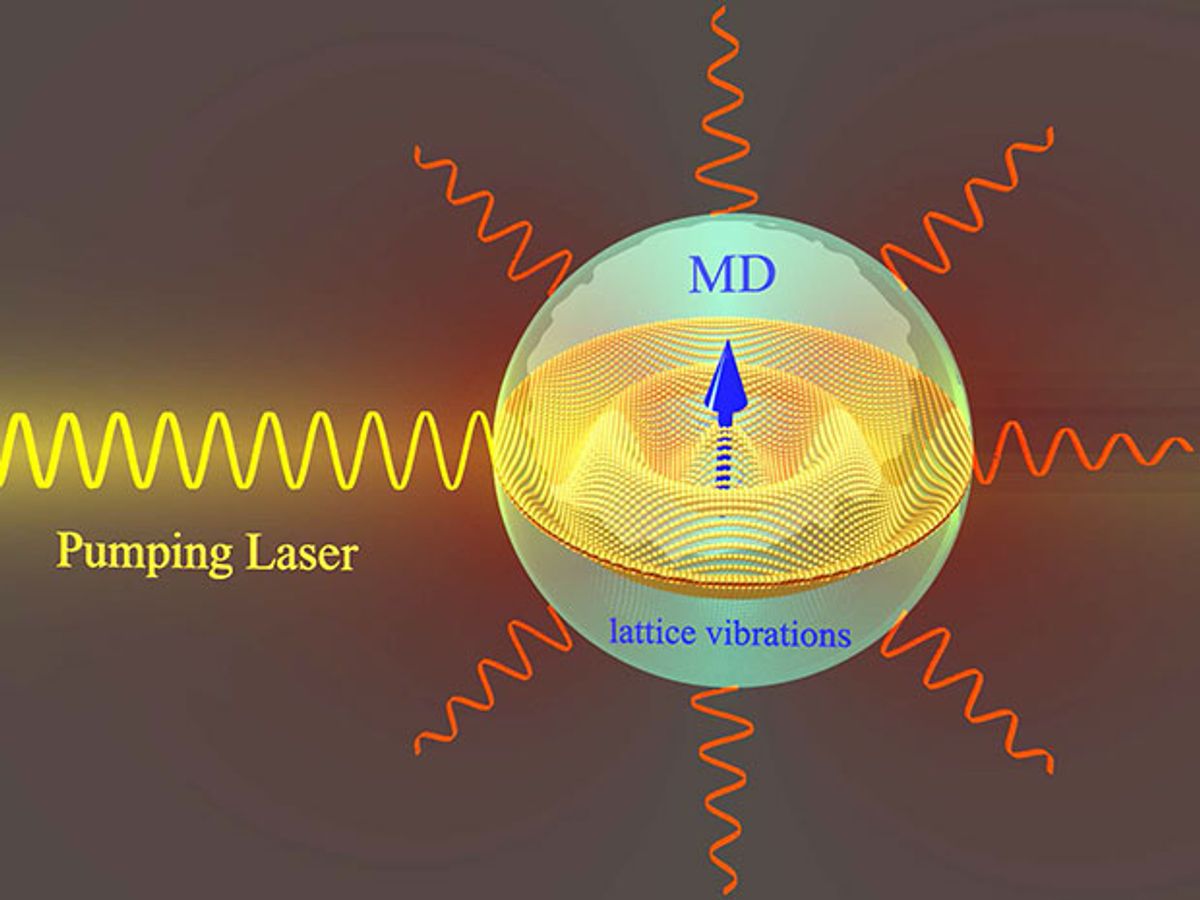An international team of researchers from the Moscow Institute of Physics and Technology (MIPT), ITMO University (St Petersburg), and the Australian National University have demonstrated that silicon nanoparticles can significantly increase the intensity of the Raman effect. The results could be a boon to nanoscale light emitters and nanoscale amplifiers used in fiber optic telecommunications.
In the Raman scattering effect, light interacts with certain materials to produce longer or shorter wavelengths, or different colors. This occurs because the light causes the molecule it is interacting with to increase its energy in an amount equivalent to the vibration of the molecule. In this newly energized state, the molecule re-emits a photon that has a smaller amount of energy than the incident photon. This smaller photon energy leads to a longer wavelength and a red color.
This effect is often leveraged today in fiber optic telecommunication in order to boost signals traveling through long stretches of glass fiber. Raman scattering also makes it possible to transfer light from a strong pump beam into a weaker data beam. This Raman amplification enables most long-distance telephone calls today.
Typically, metallic nanoparticles are used to induce this Raman scattering effect. However, in research described in the journal Nanoscale, Russian and Australian researchers looked at silicon nanospheres that support optical resonances, known as Mie resonances.
The resonant wavelengths depend on the particle size. The largest of these, known as the magnetic dipole resonance, is typically comparable to the diameter of the particle.
However, this latest research revealed that silicon’s refractive index—how light propagates through a medium—is so large that its magnetic diplole resonance is observed in wavelengths longer than 300 nanometers even though the diameter of the particle is only 100 nanometers.
The upshot is that much smaller silicon nanoparticles can be used to produce enhanced optical phenomena, such as spontaneous light emission, and enhanced light absorption.
In the experiments, the researchers found that when light hit a resonant particle, it produced a Raman emission intensity 100 times greater than that of non-resonant particles.
“The Raman effect is incredibly useful in practice, and will help not only in detecting microscopic amounts of chemical compounds,” said Denis Baranov, a post-graduate student of MIPT and one of the authors of the paper, in a press release, “but [will also be useful for] transmitting information over long distances.” Baranov notes that because electronics and optical devices continue to shrink, the need for nanostructures that have outsize Raman effects is increasingly important. “Our observations have revealed a potential candidate–silicon nanoparticles,” says Baranov.
Dexter Johnson is a contributing editor at IEEE Spectrum, with a focus on nanotechnology.



